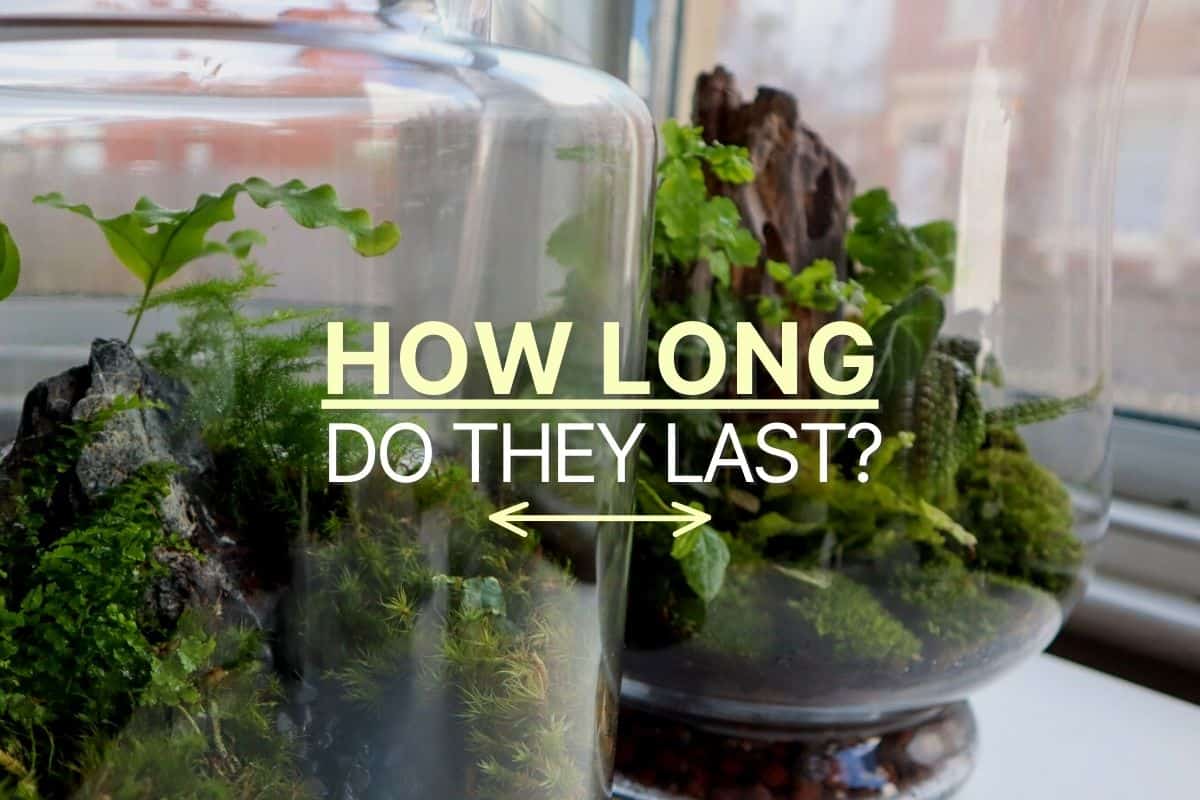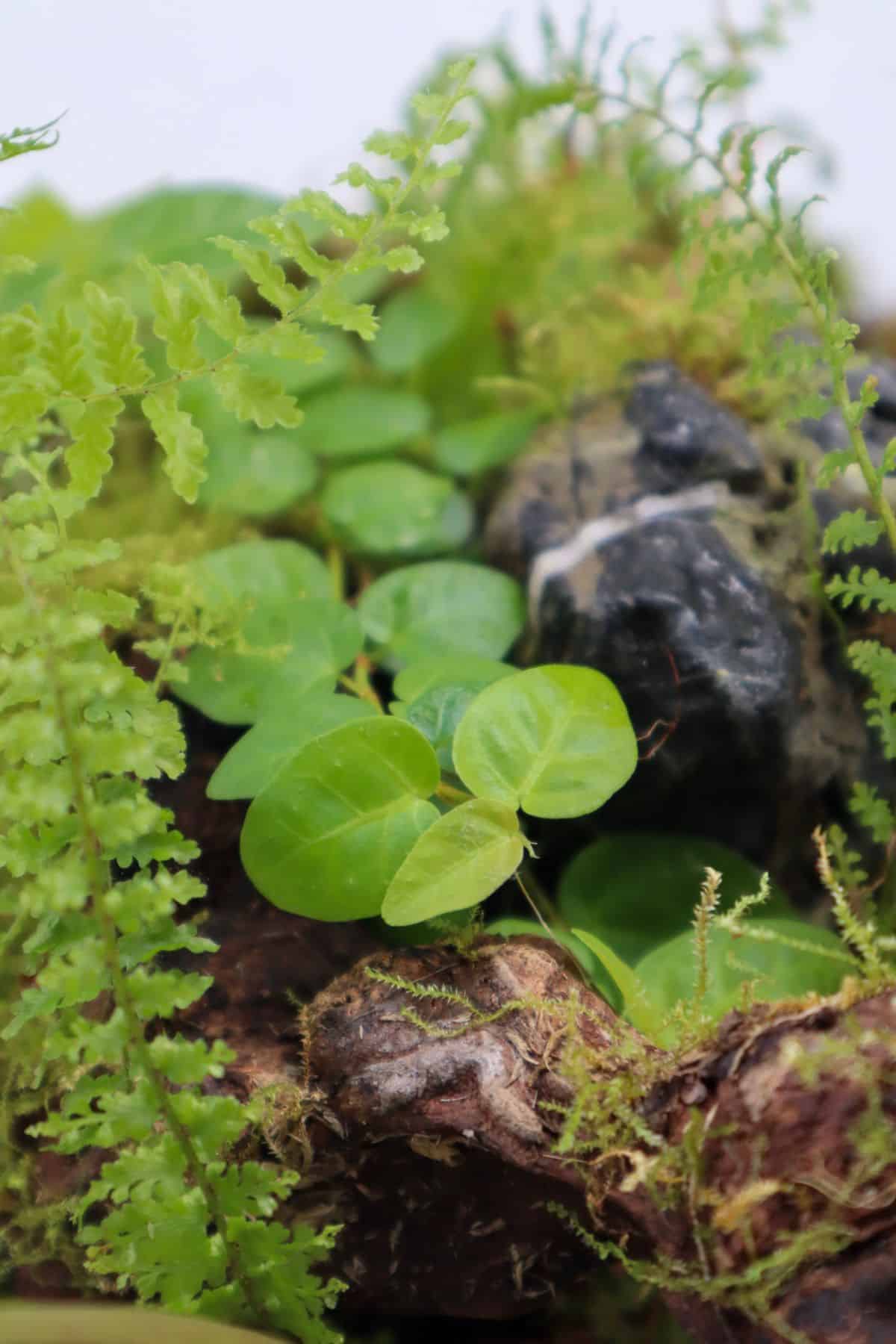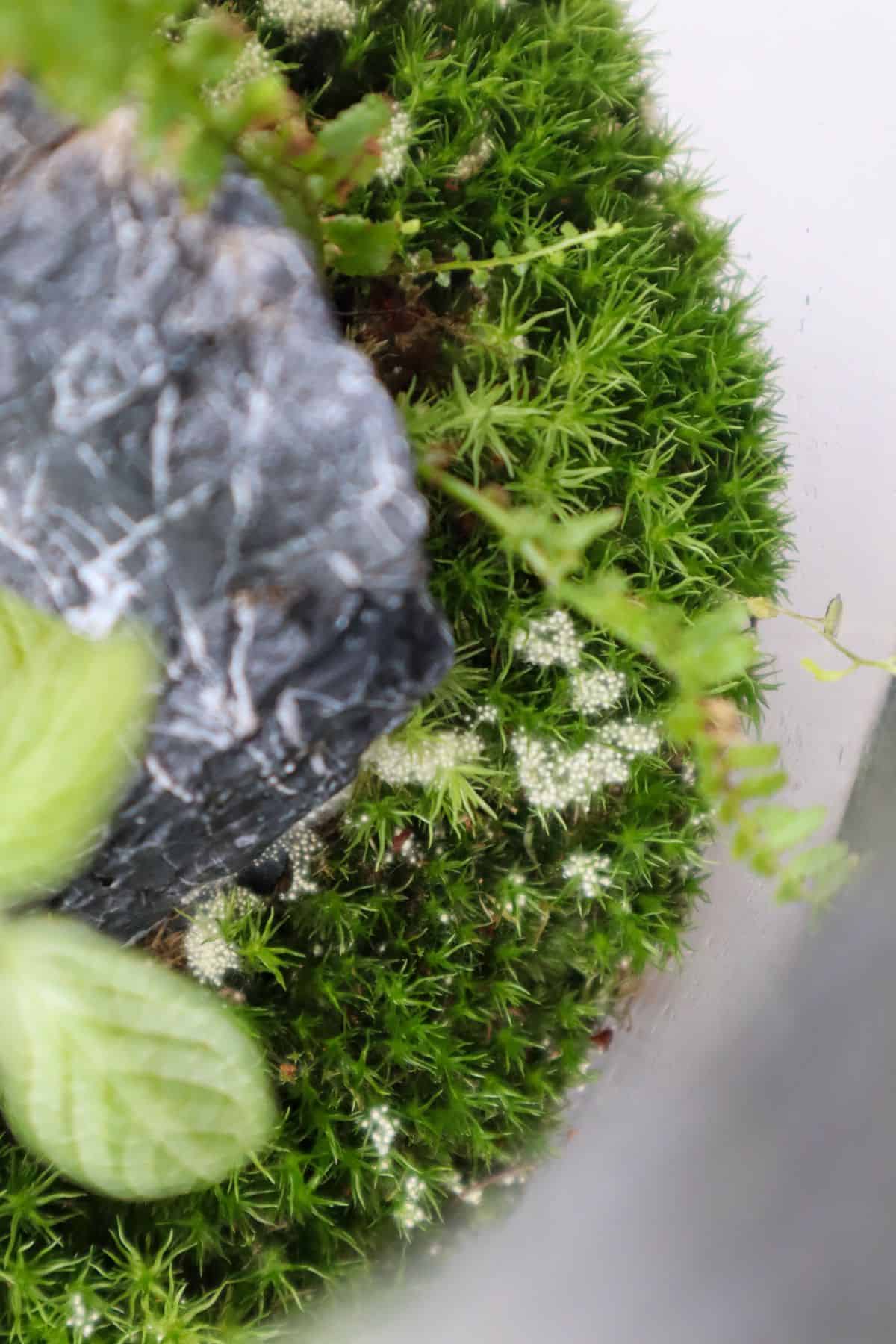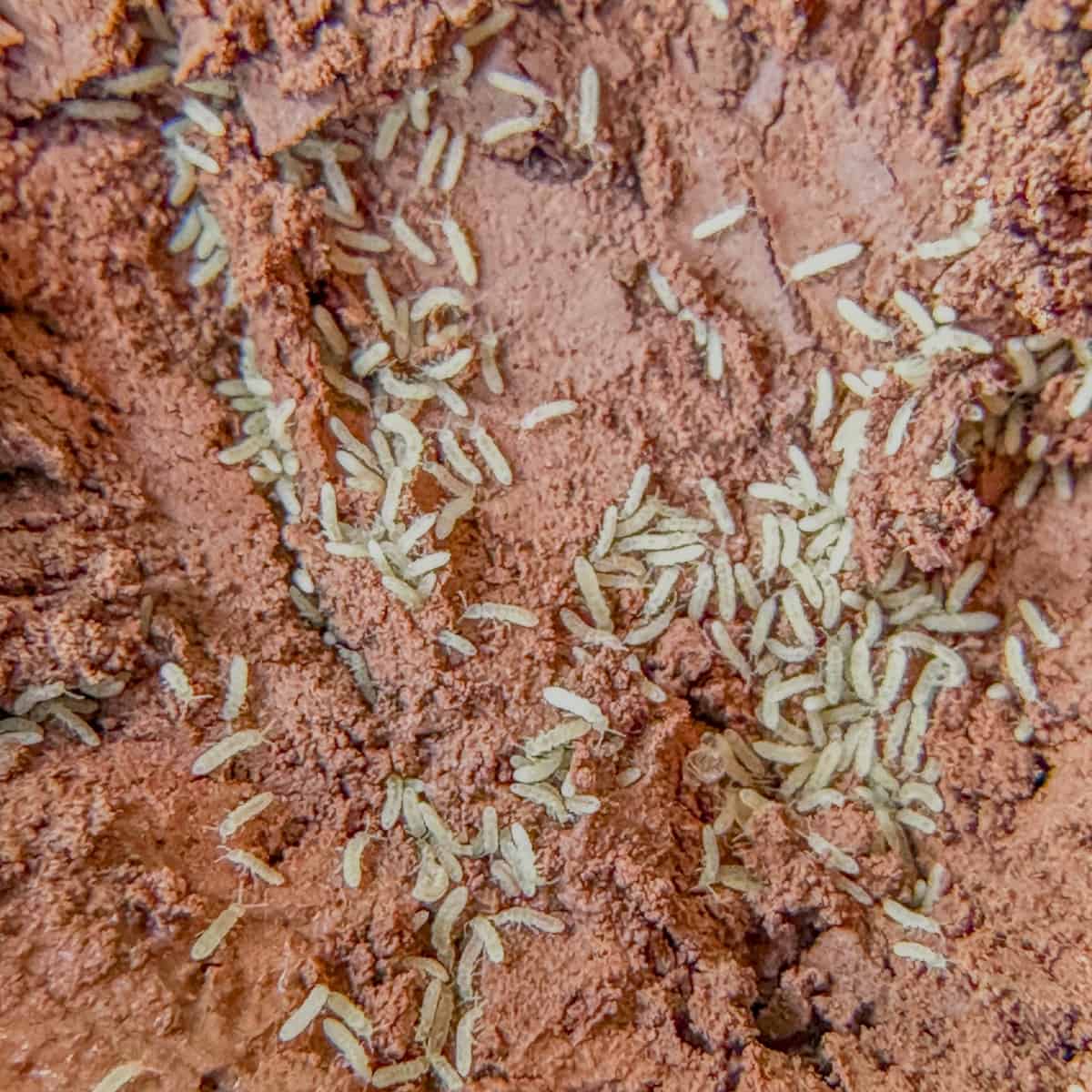It goes without saying we all want our terrariums to go the distance.
They’re full of life when we first plant them, but how long do terrariums last?
When done right, terrariums can live a very long time (we’ll help make sure of that), but the truth is, not all those Pinterest-perfect terrariums will last longer than a few weeks. Sorry, everyone!
I mean, sure, they might look the part at the beginning, but terrariums with a poor choice of plants or improper setup only have one way to go… Not to mention that they simply won’t thrive if they’re not given the right conditions.
In this post, you’ll learn how long terrariums can live and the best ways to make sure they have the best chance of living long, healthy lives.

Terrarium Tribe is reader-supported. When you purchase through links on our site, we may earn an affiliate commission (at no further cost to you). 💜
The Lifespan of a Terrarium
Honestly, the lifetime of a terrarium is hard to gauge.
After all, it’s not an isolated plant – it’s a terrarium ecosystem. There are far more factors at play here, but ecosystems do have their advantages.
- Closed terrariums water – and generally look after – themselves. So, they’re more resilient to some environmental factors (underwatering being the obvious one here).
- An ecosystem has a natural buffer. In that, it can often handle the decay of old plants and still continue to function.
- Terrariums are set to support new growth, so there are always new opportunities to thrive.
So the lifespan of a single plant becomes less important for terrariums; they’re more about how long the system can support itself.

But systems are usually held in a delicate balance, and terrariums have a lot of dynamic moving parts to consider. So, being a system comes with its disadvantages, too.
- Terrariums are more of a pseudo-ecosystem. There’s little to no wildlife and different levels/types of microbes, so we can’t assume they’ll function exactly as their real-world counterparts do.
- Interactions between plants can be detrimental. Some plants may outcompete others for nutrients, and mosses may get starved of light at the bottom.
- If one plant starts to head downhill, it can set off a cascade that harms the other plants.
In reality, there’s a lot to consider when judging the health and lifespan of a terrarium (and no two terrariums are ever the same).
I do think it’s important to say, though, that I’ve personally seen many cases of terrariums living for several years or more, so at the very least, that’s what I’d be aiming for.
Can a Terrarium Last Forever? (+ The Oldest Terrarium)
In theory, a perfectly balanced enclosed terrarium – under the right conditions – should continue to thrive indefinitely.
In fact, the longest-living sealed terrarium (built by David Latimer) has lasted on its own for over 53 years.
They may even outlast us!
But to be honest, a perfectly balanced terrarium really only exists in theory. There are so many factors in creating an eternally healthy terrarium. Light, temperature, moisture, space, plant species, and more – they all have their part to play.
Many terrariums eventually run afoul of rot.
That’s because terrarium soil lacks the biodiversity of our natural woodland, and without nature’s decomposition microorganisms, it’s hard to effectively complete the cycle. Unless, of course, you’re actively creating a bioactive terrarium and you’re adding these components.

So I wouldn’t fret if your terrarium doesn’t last 53 years or even a fraction of that. It doesn’t make you a terrible plant parent.
If it all goes wrong, you can simply use it as an opportunity to start anew.
Tips for a Long-Living Terrarium
- Do your research first – Anybody can throw together a bunch of plants and have a pretty terrarium, but that approach puts everything down to chance. Instead, take the time to choose a selection of plants that will thrive together and in whichever environment you put them in.
- Set up the terrarium properly – It’s easy to get excited and rush into a new DIY terrarium project, but so many problems can be avoided by doing your due diligence at the beginning and setting them up properly.
- Check your terrarium (semi) regularly – A lot of potential problems can be easily identified and rectified with a simple once-over. Whether it’s excessive condensation on the glass or mold spores in the soil, there are a number of red flags you can look out for (here’s how to deal with terrarium mold).
- Add some beneficial insects like springtails to help fight mold and recycle decaying plant matter – grab a springtails culture here.

- Perform some maintenance (when required) – Terrariums don’t often need maintenance, but they’ll sometimes require a little pruning or removal of decaying matter. See my terrarium care tips for more help on that.
What’s Your Experience?
Do you have a terrarium that’s going to outlive us all?
If you have any expert tips for a thriving terrarium, please share them with the tribe so we can all benefit.
Let me know in the comments!
Also, if you want to really understand the ins and outs of these natural processes, check out my scientific guide on how terrariums work.

Hi there, i wanted to know if i need to replace the plants in my terrarium or if its ok as is. Ive had it for over a year now. They aren’t succulents. If someone can get back to me ill email pic of plant
Hey Jessica, if you post this along with your photos in the Terrarium Tribe Facebook Group we’d be happy to take a look and help!
Pls mails pics of ua terrarium at
irfanaibm@gmail.com
Great article! I have a terrarium that is 50+ years old with the original plants. The roots are growing up the side to the point that it has become difficult to see the plants. While it pains me to disturb the system, the time has come to clean out the container, which happens to be a pig with a cork nose. Of course, the original plants that are salvageable will be going back.
Hi and greetings from Singapore!
Your website has been a wealth of info especially for me who’s a total newbie! Building one with my child and wonder if you can tell me if I can use bamboo charcoal for the terrarium?
Thank you very much!
Hi! First I’ve heard of bamboo charcoal to be honest, but after a quick check I’d imagine the “raw bamboo charcoal” should be fine but the “bamboo briquette charcoal” might not be (it has all sorts of other stuff bound in it).
This is my new obsession and have just started my own. I am recycling some old vases and have so far created an open terrariums with some cacti. I am looking forward to creating a closed one and have ordered some tropical little plants in the post. Yay, thanks for posting this, I pretty much live here now.
Hi there! I’ve been wanting to start a closed terrarium for a while now but I don’t have access to the right materials, only what I have at home!
What do I do?
Hi Nathan, this article on sourcing terrarium materials for cheap might be helpful.
Hi there,
We live in the redwoods and my little granddaughter and I went out and collected tiny specimens of moss, etc. and a fern that I had noticed seems to never grow large, about three years ago. We sealed it all in a large pickle jar. We’ve never opened it and when she comes over we love to look in and see what new is happening in there. It’s amazing how it is creating it’s own air and the plants are renewing themselves. Thanks for sharing your plant life with us.